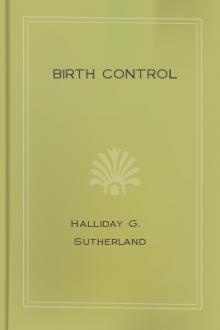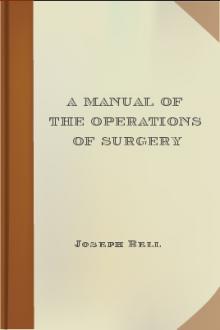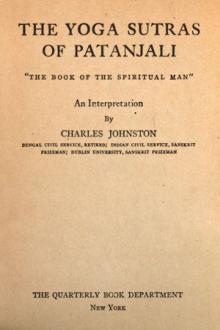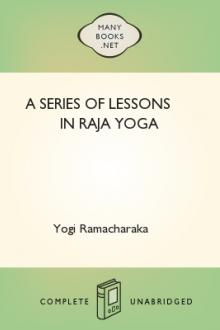Genre Health & Fitness. Page - 7

p the strong pinions of love, and clothe religion in human forms. Whatever mate- 5:1 rializes worship hinders man's spiritual growth and keeps him from demonstrating his power over error. Sorrow and reformation
5:3 Sorrow for wrong-doing is but one step towards reform and the very easiest step. The next and great step re- quired by wisdom is the test of our sincerity, 5:6 - namely, reformation. To this end we are placed under the stress of circumstances. Temptation bids us repeat the offence, and woe comes in return for 5:9 what is done. So it will ever be, till we learn that there is no discount in the law of justice and that we must pay "the uttermost farthing." The measure ye mete "shall 5:12 be measured to you again," and it will be full "and run- ning over." Saints and sinners get their full award, but not always 5:15 in this world. The followers of Christ drank his cup. Ingratitude and persecution filled it to the brim; but God pours the riches of His love into the understanding and 5:18 affectio

e attempting to live under conditions of dire poverty, and the island, with its population of 1,000, would now offer an excellent example, not of overpopulation, but of human selfishness.
My contentions are that poverty is neither solely nor indeed generally related to economic pressure on the soil; that there are many causes of poverty apart altogether from overpopulation; and that in reality overpopulation does not exist in those countries where Malthusians claim to find proofs of social misery due to a high birthrate.
If overpopulation in the economic sense occurred in a closed country, whose inhabitants were either unable or unwilling to send out colonies, it is obvious that general poverty and misery would result. This might happen in small islands, but it is of greater interest to know what does happen.
Section 5. NO EVIDENCE OF OVERPOPULATION
In a closed country, producing all its own necessities of life and incapable of expansion, a high birth-rate would eventually

; and to describe some elementary methods of caring for the sick, which, however simple, are essential to comfort, and sometimes indeed to ultimate recovery.
FOR FURTHER READING
A History of Nursing--Dock and Nutting, Volume I.
The Life of Florence Nightingale--Cook.
The Life of Pasteur--Vallery-Radot.
The House on Henry Street--Wald.
Public Health Nursing--Gardner, Part I, Chapters I-III.
Origin and Growth of the Healing Art--Berdoe.
Medical History from the Earliest Times--Withington.
Under the Red Cross Flag--Boardman.
Report on National Vitality--Fisher, (Bulletin 30 of the Committee of One Hundred on National Health. Government Printing Office, Washington).
CHAPTER I
CAUSES AND PREVENTION OF SICKNESS
Diseases of two kinds have long been recognized: first, those transmitted directly or indirectly from person to person, like smallpox, measles, and typhoid fever; and second,

ase of many animals itseems as though the necessity of a fluid environment for living matterdid not apply, for the superficial cells of the skin have no fluidaround them; these cells, however, are dead, and serve merely amechanical or protective purpose. All the living cells of the skin andall the cells beneath this have fluid around them.
Living matter occurs always in the form of small masses called"cells," which are the living units. The cells vary in form, structureand size, some being so large that they can be seen with the nakedeye, while others are so small that they cannot be distinctly seenwith the highest power of the microscope. The living thing or organismmay be composed of a single cell or, in the case of the higher animalsand plants, may be formed of great numbers of cells, those of asimilar character being combined in masses to form organs such as theliver and brain.
In each cell there is a differentiated area constituting a specialstructure, the nucleus, which contains a pe

r of a pound of sweet almonds with half a pint of milk, or vegetable stock. Another pint of milk or stock is then to be added and the whole warmed. After this add another pint and a half of stock if the soup is to be a vegetable one, or rice water if milk has been used.
An emulsion of almonds is useful in chest affections. It is made by well macerating the nuts in a nut butter machine, and mixing with orange or lemon juice.
Almonds should always be blanched, that is, skinned by pouring boiling water on the nuts and allowing them to soak for one minute, after which the skins are easily removed. The latter possess irritating properties.
Bitter almonds should not be used as a food. They contain a poison identical with prussic acid.
Apple.
It is hardly possible to take up any newspaper or magazine now a days without happening on advertisements of patent medicines whose chief recommendation is that they "contain phosphorus." They are generally very expensive, but the rea

ntly proved that the circulation can be carried on, and gangrene does not necessarily result even after such a decided interference with vascular supply.
Operation.--The ligature may be applied in one of two ways, the choice being influenced by the nature of the disease for which it is done.
1. A straight incision (Plate I. fig. 1) in the linea alba, just avoiding the umbilicus by a curve, and dividing the peritoneum, allows the intestines to be pushed aside, and the aorta exposed still covered by the peritoneum, as it lies in front of the lumbar vertebræ. The peritoneum must again be divided very cautiously at the point selected, and the aortic plexus of nerves carefully dissected off, in order that they may not be interfered with by the ligature. The ligature should then be passed round, tied, cut short, and the wound accurately sewed up.
2. Without wounding the peritoneum.
A curved incision (Plate I. fig. 2), with its convexity backwards, from the projecting end o

rances, bondage to works, and the fruition and seed of works.
The Soul of the Master, the Lord, is of the same nature as the soul in us; but we still bear the burden of many evils, we are in bondage through our former works, we are under the dominance of sorrow. The Soul of the Master is free from sin and servitude and sorrow.
25. In the Master is the perfect seed of Omniscience.
The Soul of the Master is in essence one with the Oversoul, and therefore partaker of the Oversoul's all-wisdom and all-power. All spiritual attainment rests on this, and is possible because the soul and the Oversoul are One.
26. He is the Teacher of all who have gone before, since he is not limited by Time.
From the beginning, the Oversoul has been the Teacher of all souls, which, by their entrance into the Oversoul, by realizing their oneness with the Oversoul, have inherited the kingdom of the Light. For the Oversoul is before Time, and Time, father of all else, is one of His children.
27.

this consciousness being attained, he passes to the rank of the Initiates. When the Initiate passes the second degree of consciousness, and begins to grow into a realization of his relationship to the Whole--when he begins to manifest the Expansion of Self--then is he on the road to Mastership.
In the present lesson we shall endeavor to point out to the Candidate the methods of developing or increasing the realization of this "I" consciousness--this first degree work. We give the following exercises or development drills for the Candidate to practice. He will find that a careful and conscientious following of these directions will tend to unfold in him a sufficient degree of the "I" consciousness, to enable him to enter into higher stages of development and power. All that is necessary is for the Candidate to feel within himself the dawn of the awakening consciousness, or awareness of the Real Self. The higher stages of the "I" consciousness come gradually, for once on the Path there is no retrogressio

My memory of hospitals I have known, and my mental picture of yours made up from piecing together the memories of various ones, the recollection of the feelings I had in them, etc. (intellect).
What you already know.
Speculation (intellect), the speculation based on my knowledge of other schools (memory which is intellect). A desire (emotion) that all nurses should know psychology.
Child calling on street.
Recognition of sound (intellect) and pleasant perception of his voice (emotion).
Desire to throw work aside and go for a tramp on this gorgeous day.
Emotion, restrained by stronger emotion of interest in work at hand, and intellect, which tells me that this is a work hour--and will, which orders me to pay attention to duties at hand.
So all the phenomena of mental life are included in feelings, thoughts, and volitions which accompany every minute of my waking life, and probably invade secretly every second of my sleeping life.

uld be answered. To get the full benefit, Little Book must be studied, for it is the only authorized textbook of the "Watch Your Weights."
2
Key to the Calories
Some one page the thin? They come back here.
[Sidenote: Don't Skip This]
Definition to learn:
CALORIE; symbol C.; a heat unit and food value unit; is that amount of heat necessary to raise one pound of water 4 degrees Fahrenheit.
[Sidenote: Pronounced Kal'-o-ri]
There is a good deal of effort expended by many semi-educated individuals to discredit the knowledge of calories, saying that it is a foolish food science, a fallacy, a fetish, and so forth.
They reason, or rather say, that because there are no calories in some of the very vital elements of foods--the vitamines and the mineral salts--therefore it is not necessary to know about them. They further argue that their grandfathers never heard of calories and they got along all right. That grandfather argument